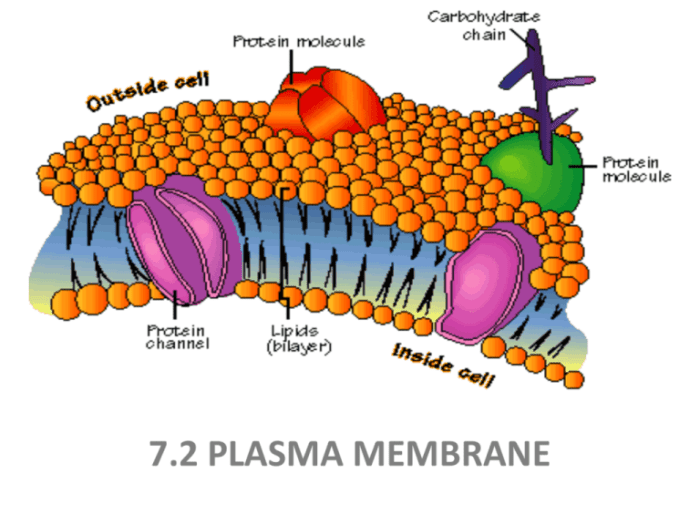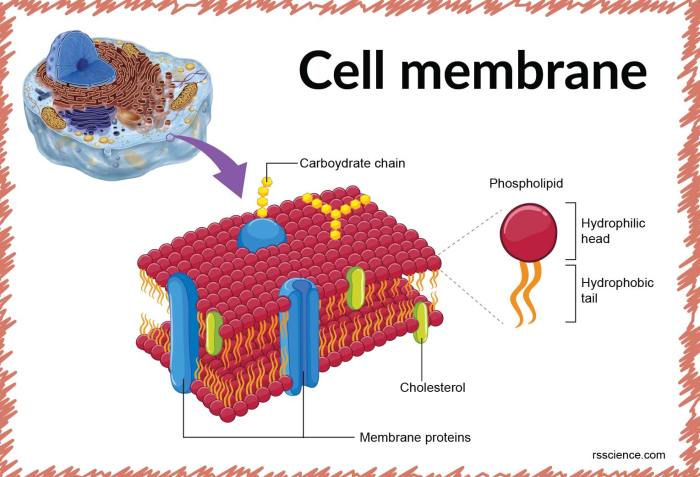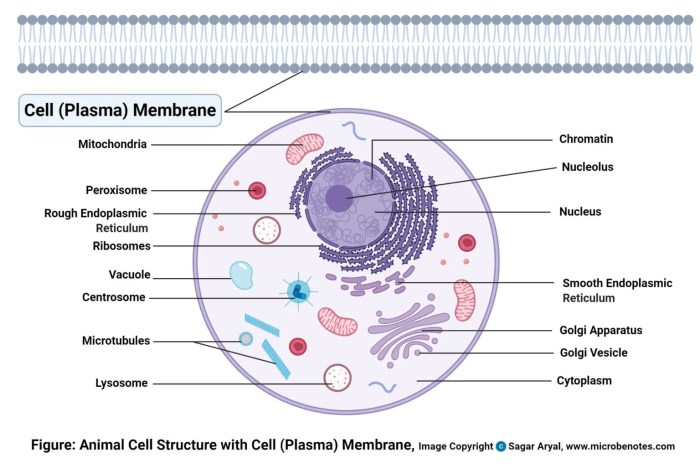Plasma membrane structure and function worksheet – Embark on a comprehensive exploration of the plasma membrane’s structure and function with our meticulously crafted worksheet. This guide delves into the intricate details of the phospholipid bilayer, membrane proteins, and carbohydrates, empowering you with a deep understanding of this vital cellular component.
Discover the plasma membrane’s crucial role in regulating molecular movement, cell signaling, and maintaining cellular integrity. Through engaging activities, you will gain a comprehensive grasp of this essential membrane’s structure and functions.
Plasma Membrane Structure

The plasma membrane is a thin layer that surrounds all cells. It is made up of a phospholipid bilayer, which is a double layer of phospholipids. Phospholipids are molecules that have a hydrophilic (water-loving) head and a hydrophobic (water-hating) tail.
The hydrophilic heads face outward, towards the water-based environment inside and outside the cell, while the hydrophobic tails face inward, away from the water.
Membrane Proteins
The plasma membrane is not just a simple barrier. It is also a dynamic structure that is constantly changing in response to the cell’s environment. This is due to the presence of membrane proteins, which are proteins that are embedded in the phospholipid bilayer.
- Integral proteinsspan the entire membrane, from the extracellular side to the cytoplasmic side.
- Peripheral proteinsare attached to the surface of the membrane, either on the extracellular side or the cytoplasmic side.
Membrane proteins play a variety of roles in cell function, including:
- Transporting molecules across the membrane
- Signaling between cells
- Cell adhesion
- Enzymatic activity
Carbohydrates on the Cell Surface
The plasma membrane also contains carbohydrates, which are attached to either lipids or proteins. These carbohydrates form a glycocalyx, which is a sugar coating that surrounds the cell.
The glycocalyx plays a variety of roles in cell function, including:
- Cell-cell recognition
- Cell adhesion
- Protection from the environment
Plasma Membrane Function

Regulating the Movement of Molecules
The plasma membrane is selectively permeable, which means that it allows some molecules to pass through it while blocking others. This is due to the hydrophobic nature of the phospholipid bilayer.
Small, nonpolar molecules, such as oxygen and carbon dioxide, can easily pass through the plasma membrane. However, larger, polar molecules, such as glucose and sodium ions, cannot pass through the membrane. These molecules must be transported across the membrane by membrane proteins.
Cell Signaling
The plasma membrane is also involved in cell signaling. Cells communicate with each other by sending chemical signals across the plasma membrane. These signals can be hormones, neurotransmitters, or other molecules.
When a signal molecule binds to a receptor on the plasma membrane, it triggers a cascade of events inside the cell. This cascade of events can lead to changes in gene expression, protein synthesis, or cell behavior.
Maintaining Cell Shape and Integrity
The plasma membrane also helps to maintain cell shape and integrity. The phospholipid bilayer is a strong and flexible barrier that protects the cell from its surroundings.
The plasma membrane also contains a network of proteins that help to maintain cell shape. These proteins are attached to the cytoskeleton, which is a network of fibers that runs throughout the cell.
Worksheet Activities: Plasma Membrane Structure And Function Worksheet

Table: Plasma Membrane Structure and Function
| Structure | Function |
|---|---|
| Phospholipid bilayer | Forms a barrier around the cell |
| Membrane proteins | Transport molecules, signal between cells, provide cell adhesion, and carry out enzymatic activity |
| Carbohydrates | Cell-cell recognition, cell adhesion, protection from the environment |
List: Examples of Membrane Proteins and Their Functions, Plasma membrane structure and function worksheet
- Sodium-potassium pump: Transports sodium and potassium ions across the membrane, maintaining the cell’s resting potential
- Glucose transporter: Transports glucose into the cell
- Insulin receptor: Binds to insulin, triggering a cascade of events that leads to the uptake of glucose into the cell
- Cell adhesion molecules: Bind to other cells, holding them together
Diagram: Movement of Molecules Across the Plasma Membrane
The diagram below shows the movement of molecules across the plasma membrane.
[Insert diagram here]
The diagram shows that small, nonpolar molecules can pass through the membrane by simple diffusion. Larger, polar molecules must be transported across the membrane by membrane proteins.
FAQ Resource
What is the primary function of the plasma membrane?
The plasma membrane’s primary function is to regulate the movement of molecules and ions across the cell, maintaining cellular homeostasis and compartmentalization.
How do membrane proteins contribute to cell function?
Membrane proteins are embedded in the lipid bilayer and perform diverse functions, including transport, signaling, adhesion, and enzymatic reactions, enabling cells to interact with their environment and carry out essential processes.
What is the role of carbohydrates on the cell surface?
Carbohydrates on the cell surface form glycoproteins and glycolipids, which play crucial roles in cell recognition, cell-cell adhesion, and signaling, facilitating interactions between cells and their environment.